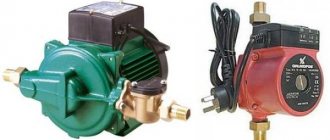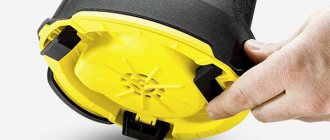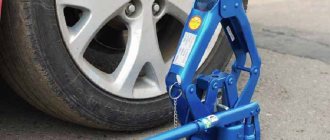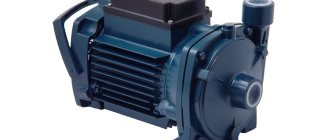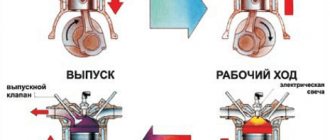A screw pump is a unit designed for pumping solutions and liquids of high viscosity. This kind of equipment is used in many areas of industry - textile chemical and metalworking production. Screw pumps have a simple design, are reliable and have a long service life.
Screw pump design - what does the device consist of?
The main element of a screw pump is the rotor. It has a cylindrical shape and a spiral groove resembling a screw or auger. The rotor is located inside a stator equipped with an elastomeric sleeve and a spiral channel. The stator itself has the shape of a steel pipe. The rotary spiral can be equipped with several passes. In this case, the stator spiral is always equipped with one more entry.
Along the contact line between the stator and the rotor there are areas protected from water penetration, dividing the working cavity of the pump into several parts. Due to the special arrangement of the rotor in the stator, these sections alternately open and close.
The volume of pumped liquid is adjusted by changing the number of rotor revolutions. To do this, use a frequency drive.
All pump elements are housed in a durable plastic or cast iron housing. Moreover, if a screw pump is used for a well, its body is made of stainless steel.
Operating principle and purpose of the device
The operating principle of each screw unit is based on the movement of liquid along the screw axis inside the chamber. The axis is formed between the surface of the housing and the helical grooves by inserting the helical projections into adjacent grooves. Thanks to this operating principle, a closed space is created inside the device, which does not allow liquid to move back out of the device.
Nowadays, screw pumps are used in many areas of human activity. Most often this equipment is used:
- In food factories - in food production, units are used as dispensers;
- In construction - pumps are used to supply mixtures used for the production of self-leveling floors and roofing;
- At wells, devices pump out contaminated water with a large amount of impurities. A screw well pump can be used both for a source with clean water and for a well with sand;
- In the chemical industry, screw pumps pump large volumes of thick substances for further processing.
High reliability and the ability to operate under high loads make screw pumps one of the most progressive types of pumping equipment.
Tests
The main test criterion for all types of pumps is the volume of liquid pumped under a given pressure per unit of time. Taking into account the specifics of the design, when changing a given pressure value, it is possible to determine an incorrectly maintained gap between the rotor and the cage, or an incorrectly set angle of inclination of the teeth, or the number of revolutions per minute of the rotor.
Another important factor in testing this type of pump is its balance (absence of free vibrations during shaft rotation). Timely elimination of mass imbalance along the rotor axis can prolong its life and, accordingly, save money on its further maintenance.
When evaluating new equipment, a design analysis is carried out for profitability (payback). This means that the newly manufactured pump, with the same characteristics as the analogue throughput capacity of the pumped liquid (gas), must have a reduced power consumption (taking into account a number of possible assumptions with the angles of inclination of the shaft, this is quite acceptable, using, for example, a variable angle of inclination of the teeth along the shaft axis) , the material from which the pump is made is also important. Its price and mechanical characteristics (resistance to aggressive environments, thermal conductivity) play an important role in the cost of the equipment and its reliability.
Advantages and disadvantages of screw pumps
The high demand for screw pumps is due to their many advantages. Among them it is necessary to highlight:
- High efficiency of devices – from 50 to 70%;
- The units are capable of working with very viscous liquid, creating a pressure much higher than impeller pumps;
- Screw pumps are capable of pumping liquids with large amounts of solid impurities;
- The operating principle of the screw device eliminates the formation of pulsations, which are typical for other types of equipment;
- Screw pumps are self-priming devices, and the maximum liquid intake depth can be 8.5 m;
- The devices are compact and have low noise levels;
- Due to their high reliability, screw pumps rarely require repairs and do not require frequent maintenance.
Like other types of pumps, screw equipment has its weaknesses. The first disadvantage is the high cost of the units, which is why not all enterprises can afford to use them in their production. The second drawback is the inability to adjust the volume of pumped liquid.
Installation Rules
In order for the submersible screw pump to last as long as possible, the following rules must be observed during installation:
- The water riser pipe must withstand the highest pressure in the system and match the dimensions of the outlet pipe.
- The flexible hose must prevent the formation of twists and kinks.
- Lifting and lowering of equipment should be carried out using nylon or steel cable. In any case, the pump must not be suspended by the electrical conductor.
- The diameter of the casing must allow the free passage of equipment, including cables and pipes.
- The pump should not be located less than 0.5 m from the bottom of the well.
- The unit should not pump water with the water shut-off valve closed.
- Pumping equipment must be equipped with a dry-running safety sensor.
- The electric cable should not be in a coil, as this will lead to overheating and melting of the insulation.
Advice! If the model is not equipped with a check valve from the factory, it must be installed during installation - on the outlet pipe in front of the water intake line.
Types of screw pumping equipment
Since screw devices are used in many fields of application, they differ from each other in their design features. According to their design, the units are divided into the following types:
- Screw pumps - these units are designed for pumping large volumes of aggressive chemicals and abrasives. The screw device works effectively in both vertical and horizontal positions. Often such equipment is used for water from wells and deep wells. Screw units have a simple design and relatively low cost;
- Rod pumps - these types of devices are used for highly viscous media in oil production and refining enterprises. The rod pump design includes a wellhead gland, a rotary column and a surface drive. Units of this type are characterized by high productivity and fairly high cost;
- Vacuum pumps - these units are equipped with two screw rotors rotating in opposite directions. Thanks to this design of the vacuum pump, the liquid first enters the area between the screw chambers and the cylinder, and then enters the exhaust port.
A screw pump for viscous liquids shows high performance, but the efficiency of the device largely depends on the correct use of it. In this regard, before purchasing a device for domestic or industrial purposes, you need to make sure that it is suitable for the chosen area of application.
Scope of application of screw units
An important point is that the screw pump is designed to pump not only water, but also steam, gas and other liquids. The water that rises from the well serves a variety of purposes:
- Drinking and solving various household problems.
- Filling tanks, fountains and pools.
- For powering irrigation and drip irrigation systems.
- For the accumulation of various containers, for example, boilers and heating boilers.
To use screw units, all design features of such a device should be taken into account. The most commonly installed screw pumps are:
- Water supply of a suburban area. Many summer cottages are located at a great distance from the central water supply network.
- Some models are characterized by the fact that they can carry out complete or partial water purification.
- Liquid supply from wells. Design features determine that the device can be operated even if the container is severely clogged. The screw pump device provides the required pressure in the pipeline.
- Some models are installed during construction work to pump out groundwater or melt water. An example is also the pumping of paints and other similar substances.
The main operational characteristics determine the widespread use of screw units in a wide variety of industries. The screw pump can last for a long period, but the choice must be made depending on the operating conditions.
Which pump is better - a centrifugal pump or a screw pump?
Many people who want to buy a pump for household purposes think about what is better - a centrifugal or screw pump. Both of these types differ in their areas of use and design features.
A centrifugal pump is a fairly expensive device that can cope well with providing water to a country cottage. These pumps can be used for both wells and wells. The unit includes an impeller fixed on the shaft, which pushes water upward. This equipment is only suitable for pumping clean water, has high efficiency and consumes a small amount of electricity. Centrifugal pumps are characterized by high reliability and long service life.
Screw pumps are used primarily in industry. Much less often, a submersible unit of this kind is used in everyday life and on the farm. If just such a device was chosen for servicing a private home, then it should be used for pumping not too contaminated water, the amount of solid impurities in which should not exceed 150 g/m3 of liquid.
The choice of pumping equipment mainly depends on the water it will pump. If the unit is required to supply clean drinking water, then it is better to choose a centrifugal pump. If liquid is needed for irrigation, then it is better to give preference to screw equipment.
Screw and vane pumps - what are the differences?
Most inexperienced buyers often make the mistake of mistaking a vane pump for a screw pump. The differences between these types of units lie in the areas of application and characteristics of the units.
Screw devices are mostly used for industrial purposes, much less often in everyday life. Among their advantages are:
- Uniform supply volume of the pumped liquid;
- Self-priming ability;
- Excellently balanced design;
- The unit operates efficiently even if there are solid impurities in the liquid;
- High strength of parts.
The disadvantages of screw pumps include the high cost of equipment, large dimensions, increased friction of its spare parts, high noise levels and ineffective cooling.
Vane pumps are used in everyday life. The centrifugal vane pump has the following advantages:
- Easy to operate and maintain;
- Possibility of connecting several vane pumps to one pipeline at once;
- Modest dimensions and weight;
- Low noise level during operation;
- Low cost of most models;
- Availability of an effective cooling system.
Among the disadvantages of a roller vane pump, the inability to work with contaminated water should be highlighted. The centrifugal vane pump has low efficiency, and when the flow channels are narrowed, most units overheat, which leads to their breakdown. For the production of most models, heavy steel parts are used, which, when paired with a light plastic body, impair the balance and stability of the devices.
An important characteristic of a vane pump is its performance. It greatly depends on the quality of the water and the power of the unit. If the pump does not have high power, then it will not pump the amount of liquid necessary to service a private home. Therefore, for suburban housing, you should choose more powerful equipment, the purchase of which will cost much more.
Details
Device Features
Screw pumps are standard, and they also act as deep-well installations.
Standard structures are installed in wells, boreholes that have a depth to the sandy aquifer. The pumps are compact in size and light in weight (the body has a diameter of no more than 250 millimeters). Water can be pumped out from a distance of up to twenty-five meters. Deep pumps are used in artesian wells. They are equipped with an extended auger that can create high levels of pressure. The devices are highly efficient, but such pumps are more expensive. The pumps are capable of pumping out liquid from depths of up to two hundred meters or more.
When choosing the type of device, it is necessary to take into account the parameters of the well. It is important to know the volume of liquid and at what depth the aquifer is located. Also taken into account is the pump power indicator, a type of electric motor that drives the auger. Water is supplied when the engine is running, you need to organize a backup device as a power source, perhaps in the form of a generator with a drive that was in the internal combustion engine.
Standard pumps have AC motors that can be plugged into regular 220-volt outlets. They absorb energy up to 1.5 kilowatts per hour. However, for security reasons, it is recommended to allocate a separate line for them. The circuit is equipped with an automatic fuse that will turn off the motor if a short circuit occurs, the auger or rotor jams.
How to install a screw type pump
Pumps are installed manually. An electricity cable with a pressure hose is connected to the pump. The first step is to calculate the depth of the pump. Next, a mark is placed on the sleeve or cable. Sometimes it is necessary to additionally install a special cable on the structural parts for installation.
The pump has a float that is activated when there is no water in the well. To ensure that it works properly, check the quality of the connection of the safety device. The factory instructions contain information on how to do this.
When the pump is installed at the desired depth, a cable is attached to hold the device in the desired position. You should not use a pressure hose or cable for these purposes; they will not cope with the load. Then the electricity is connected.
Attention! If the pump is installed correctly, then during operation it does not make knocks or vibrations, and water flows constantly.
Famous pump brands
To install a pump in a well with a small diameter of up to one hundred and twenty centimeters, Aquarius pumps are suitable. They are produced in Ukraine. The devices have an affordable price and can pump aggressive media.
Belamos pumps, also manufactured in Ukraine, are analogues. The body and other external parts are made of stainless steel. The pump has a sensor that is triggered if the device overheats.
Vikhr brand devices are manufactured in Russia. Case material: stainless steel. It has hooks for installing a safety rope. The pumps can be submerged up to thirty-five meters deep, the motor has a power of 550 watts.
The Chinese brand UNIPUMP is considered a budget option. The pumps are made of steel and can pump water that contains sand and clay for a long time.
GRUNDFOS brand devices are used for pumping water in wells no more than 55 meters deep. There are different modifications of pumps, which have different body diameters and performance levels. The smallest diameter is 75 millimeters. The pumps are designed so that the rotor accelerates smoothly for operation. They are protected from power surges. All components are made of high quality material. They cost from 40,000 to 45,000 rubles.
